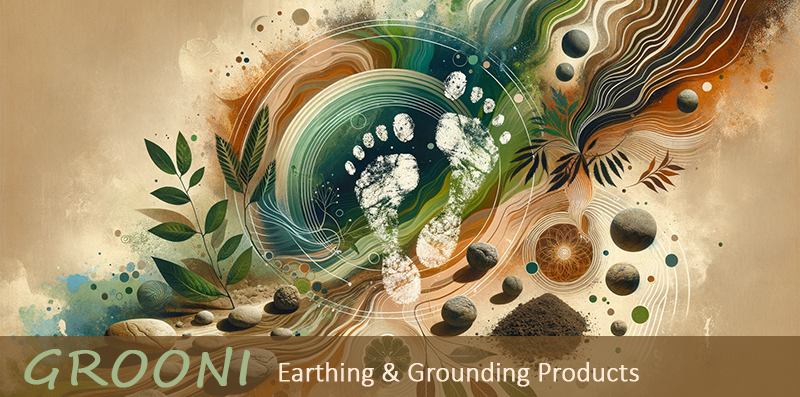
Ever feel like your battery’s running low, no matter how much sleep you get or how much coffee you drink? Sometimes, the answer isn’t in another cup of coffee or an energy drink—it’s about reconnecting with the Earth itself. Earthing, also known as grounding, is a simple, natural way to recharge by connecting physically with the Earth’s surface. From improved sleep to a clearer mind, grounding is credited with enhancing energy and vitality.
Contents
- What Is Earthing and How Can It Boost Energy?
- How Grounding Reduces Fatigue and Restores Energy
- Simple Grounding Techniques to Boost Energy
- Indoor Grounding Techniques for Daily Energy Boosts
- How Long Does It Take to Feel the Effects of Grounding?
- Who Can Benefit Most from Grounding?
- Getting Started with Grounding to Boost Energy and Vitality
What Is Earthing and How Can It Boost Energy?
Earthing, or grounding, is the practice of connecting directly with the Earth, typically by walking barefoot on natural surfaces like grass, sand, or soil. This contact allows free electrons from the Earth to flow into the body, balancing the body’s electrical charge. Think of it as recharging your body’s battery, naturally.
The Earth’s Energy and Your Body
The Earth carries a mild negative charge, and when you touch it, those electrons flow into your body, helping to neutralize positive charges that build up from exposure to electronics, pollution, and stress. This natural charge can have a calming and energizing effect, as it’s believed to stabilize our body’s electrical environment. As a result, grounding can help reduce feelings of fatigue, promote mental clarity, and even improve physical vitality.
How Grounding Reduces Fatigue and Restores Energy
Grounding is more than just a “feel-good” practice—it’s based on how the body’s energy system interacts with the Earth’s natural energy. Here’s how grounding is thought to impact energy levels and why it may be particularly beneficial for those dealing with sluggishness and fatigue.
Reducing Inflammation and Pain
When you’re dealing with chronic inflammation, your body is constantly working in overdrive, which can leave you feeling drained. Grounding helps reduce inflammation by allowing free electrons from the Earth to neutralize free radicals, molecules that can cause cellular damage and lead to inflammation. By “grounding out” these free radicals, you may reduce inflammation and the energy drain that comes with it.
Lowering inflammation can make it easier to move, exercise, and live without pain, making a big difference in your energy levels. It’s like shedding extra weight that you didn’t realize you were carrying.
Calming the Nervous System
Stress is one of the biggest energy zappers, and grounding is believed to help calm the nervous system. When you connect with the Earth, grounding can shift your body’s nervous system from the high-stress “fight-or-flight” mode to the more relaxed “rest-and-digest” state. This shift conserves energy and allows your body to recharge, both physically and mentally.
By promoting this calming effect, grounding can make it easier to handle daily stressors without feeling worn out. It’s like putting the body in “energy-saving mode,” so you have more vitality to draw on when you need it.
Improving Sleep Quality
A good night’s sleep is the foundation of feeling energized, but many of us struggle with poor sleep quality. Grounding is thought to help regulate cortisol, the body’s stress hormone, which can support better sleep patterns. When cortisol levels are stable, you’re more likely to fall asleep easily, stay asleep, and wake up feeling refreshed.
By improving sleep quality, grounding helps the body restore and recharge, so you wake up feeling more vibrant and ready for the day. It’s the natural way to recharge, without the morning grogginess that can come from poor sleep.
Simple Grounding Techniques to Boost Energy
Grounding doesn’t require any fancy equipment or a specific location. Here are a few natural grounding techniques to try, whether you’re at home, in a city, or out in nature. Just a few minutes each day can make a noticeable difference in your energy and vitality.
Walking Barefoot Outdoors
The most traditional way to ground yourself is simply to walk barefoot on natural surfaces like grass, soil, or sand. Walking barefoot allows the Earth’s electrons to enter your body, helping to balance your energy and promote a sense of calm and vitality. Aim for at least 10-15 minutes a day to feel the effects.
If you’re not near a natural area, even standing barefoot on concrete can provide some grounding benefits, as concrete is conductive to a degree. Every little bit counts when it comes to connecting with the Earth’s energy.
Sitting or Lying on the Ground
If walking barefoot isn’t an option, try sitting or lying on the ground. Whether you’re in a park, backyard, or at the beach, simply being in contact with the ground can recharge your energy. Let your hands or feet touch the Earth to maximize the grounding effect.
Gardening with Bare Hands
Gardening is another effective way to ground yourself. Working with your hands in the soil not only connects you with the Earth but also brings a calming and therapeutic effect. Spending even a few minutes digging, planting, or weeding can boost your mood and help reduce fatigue.
Indoor Grounding Techniques for Daily Energy Boosts
While outdoor grounding is ideal, you can still practice grounding indoors with the help of grounding products. These products mimic the effects of natural grounding and can help keep your energy steady throughout the day.
Using a Grounding Mat or Sheet
Grounding mats and sheets are designed to bring the benefits of grounding indoors. These conductive products connect to a grounded electrical outlet, allowing electrons from the Earth to flow through the mat or sheet. By placing your feet on a grounding mat or sleeping on a grounding sheet, you can maintain a grounding connection even when indoors.
Touching Metal Objects Connected to the Ground
If you’re unable to use a grounding mat, touching a grounded metal object can provide a temporary grounding effect. Metal objects connected to the Earth, like pipes or faucets, can act as conduits, allowing a small grounding effect. While it’s not a substitute for direct contact with the Earth, it’s an easy option for a quick energy boost indoors.
How Long Does It Take to Feel the Effects of Grounding?
One of the most common questions people have about grounding is how long it takes to feel the benefits. The answer can vary depending on your individual needs, but many people report feeling more relaxed and energized within minutes of grounding. For long-term benefits, such as improved sleep and reduced inflammation, it’s best to make grounding a regular practice.
Quick Benefits vs. Long-Term Gains
If you’re using grounding for a quick energy boost, even a few minutes can help reset your body’s energy and make you feel more alert. For more lasting benefits, such as better sleep or reduced chronic pain, consistency is key. Many people find that after a few weeks of regular grounding, they experience a noticeable improvement in overall energy levels and vitality.
Creating a Routine to Maximize Benefits
Consistency is essential when it comes to grounding. Try to make grounding a daily habit by setting aside a few minutes each morning or evening. Many people find that grounding is a relaxing way to wind down after a busy day or to start the morning feeling centered and focused.
Who Can Benefit Most from Grounding?
Grounding offers a range of benefits that can be helpful for almost anyone, but certain groups may find it especially beneficial for boosting energy and vitality. Here’s who may benefit most from grounding.
- People with Chronic Fatigue: If you frequently feel tired despite getting adequate sleep, grounding may help by promoting relaxation, reducing inflammation, and restoring energy naturally.
- Those with High Stress Levels: Grounding’s calming effect on the nervous system can help counteract stress, making it easier to manage daily pressures without feeling drained.
- Athletes and Active Individuals: Grounding can reduce inflammation and speed up recovery after exercise, helping active people feel more energized and less fatigued.
Getting Started with Grounding to Boost Energy and Vitality
If you’re ready to try grounding for yourself, start with small steps and pay attention to how you feel. Set aside a few minutes each day to connect with the Earth, whether that’s a quick barefoot walk, time on a grounding mat, or a quiet moment sitting on the ground. With a little consistency, grounding can become a part of your daily routine that boosts your energy, supports your wellness, and reconnects you with the natural world.
So, next time you’re feeling sluggish, skip the extra coffee and try grounding instead. It’s a simple, natural way to recharge, and your body—and mind—might just thank you for it.

